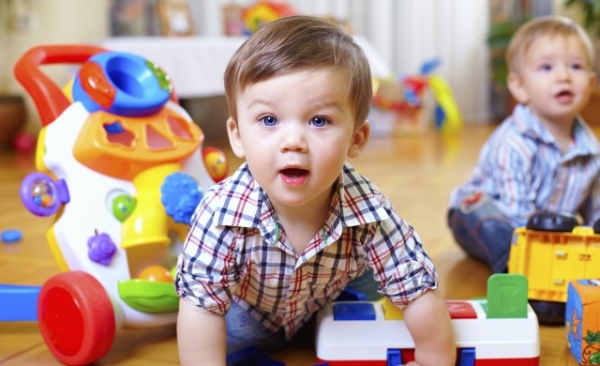In preschool, social interaction through play-based learning invites children to explore the world around them in new ways, using skills like collaboration, critical thinking, communication, and creative innovation to solve problems and learn. But with the pandemic, educators and parents alike are concerned about the lack of social interaction this year and the impact of that on children’s social and emotional development.
So how can we support social and emotional development and play, especially for our youngest learners, whether we’re in in-person, remote, or hybrid environments?
IN-PERSON LEARNING AND SEL
Social skills are sometimes misinterpreted as “soft skills” or “non-cognitive skills” in education; however, learning sciences continue to prove that all learning is founded on relationships and social grounding. Our ability to read and do math, for example, stems from our social skill development and ability to form connections and communicate.
For schools that have resumed in-person learning, providing daily social and emotional learning (SEL) instruction and practice will help foster a sense of belonging and safety as students return to close proximity with others. Routines ground us, and just as we wouldn’t go a day without brushing our teeth, SEL skills should be practiced every day so that they grow stronger.
To do this through play, invite students to draw how they’re feeling, make frozen statues with their bodies to reflect a superhero strength they wish they possessed, or describe their feelings as if they were an ice cream cone. You can also play games that can be socially distant but still fun, like Simon Says, which has been studied and found to improve executive functioning skills or clapping games that develop pattern awareness. Being back at school is an opportunity for students to celebrate and support one another through this challenging time.
You can emphasize school culture and rethink school-wide traditions—for example, using video-based morning announcements with song or movement can create a common language and shared vision for a community, and you can initiate community-wide celebrations or fun competitions either in the neighborhood or virtually, like a scavenger hunt or a costume parade.
HYBRID LEARNING AND SEL
If you are working in a hybrid instruction environment, use the valuable in-person time you have with students for things that would be more difficult to accomplish via remote learning—building meaningful relationships, strengthening social connections, and promoting small group play. Have them explore how to express feelings through their faces and bodies and recognize those feelings in others.
You can then reinforce what you have prioritized in person when students are learning remotely, and students can reinforce this practice with their families and independently watch videos to guide their practice of emotional expression in the classroom.
Families are playing a more critical role in the learning process than ever before. By providing support for families to continue to facilitate SEL at home, you can help them feel more connected to the school community. Show them how simple it can be to guide play and reinforce SEL skills at home through playful activities like designing forts out of boxes or furniture, setting up a hopscotch game to practice number skills, or learning how to cook together, which can be a chance to explore units of measurement.
Build-in regular opportunities to check in with students and families by asking them to share a highlight of their day or one wish they have for tomorrow. On a video call, they can express this through a movement and you can mirror that movement back to them, showing that you hear and validate their experience.
FULLY REMOTE LEARNING AND SEL
Fully remote learning presents a big challenge for preschool kids. Connect with them as a whole class, in small groups, and one-on-one. Offer conversation starters such as “What was your favorite moment yesterday?” or “What is something you’re excited about?” You can ask students to tell you how they’re feeling as if they are reporting on the weather, or to share how they’re feeling via a colour.
Continuing to reinforce a common language is critical. To do this, create weekly challenges or activities to share with families and foster a sense of community school-wide while students are learning from home. Use surveys to find out what your students and their families are naturally interested in and find ways to explore those interests with them. This could mean setting up a virtual talent show or creating a shared music playlist or a group collage of moments, people, or places that bring families joy.
Social and emotional learning and play are inextricably linked and critical daily components of how we move through our days, support our students, and support one another.
By Sara LaHayne







